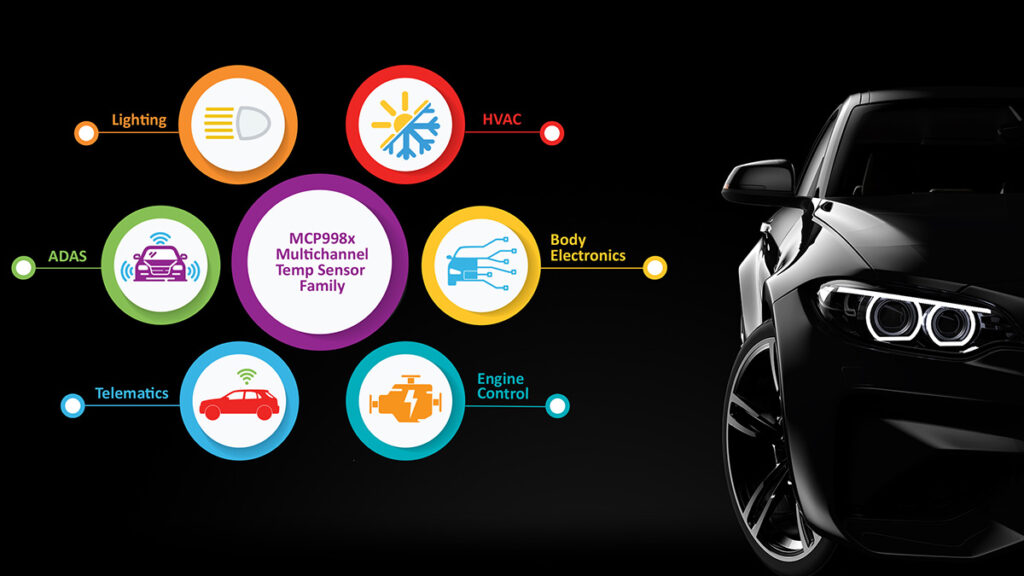Microchip Technology has introduced the MCP998x family. This launch heralds a significant expansion in the availability of automotive-grade remote temperature sensors, offering one of the most extensive portfolios in the sector from a single vendor. The MCP998x family consists of 10 automotive-qualified sensors, each engineered for 1°C accuracy across a broad operating temperature range.
Unique to this family is the inclusion of five sensors equipped with non-overwritable shutdown temperature setpoints, ensuring robust security against software interference or malicious tampering.
The MCP998x sensors offer up to five channels for monitoring, alongside various alert and shutdown features, making them ideal for systems overseeing multiple thermal elements. These sensors also incorporate resistance error correction and beta compensation, negating the need for extra configuration and thereby enhancing accuracy. Employing a single, integrated temperature sensor for monitoring multiple locations simplifies design, reduces board complexity and size, and leads to a lower bill of material (BOM).
Fanie Duvenhage, vice president of Microchip’s mixed-signal and linear unit, emphasised the significance of this release, saying, “This new family of remote temperature sensors is expanding customer choice in a product category that, historically, has offered limited options. With 10 devices to choose from, each offering better accuracy in very high temperature applications and five with shutdown safety features, the MCP998x family provides customers a wide array of automotive multi-channel temperature sensors to select from.”
Designed for high accuracy, particularly in high-temperature scenarios, the MCP998x family boasts 2.5°C accuracy up to 125°C. This makes them especially suitable for automotive environments where electronics often operate at higher temperatures. The sensors are ideal for various vehicle functions, including HID lamps, advanced driver-assistance systems (ADAS), automotive servers, video processing, infotainment systems, engine control, telematics, and body electronics such as seat control, lighting systems, mirror control, and power windows.
There’s plenty of other editorial on our sister site, Electronic Specifier! Or you can always join in the conversation by commenting below or visiting our LinkedIn page.
